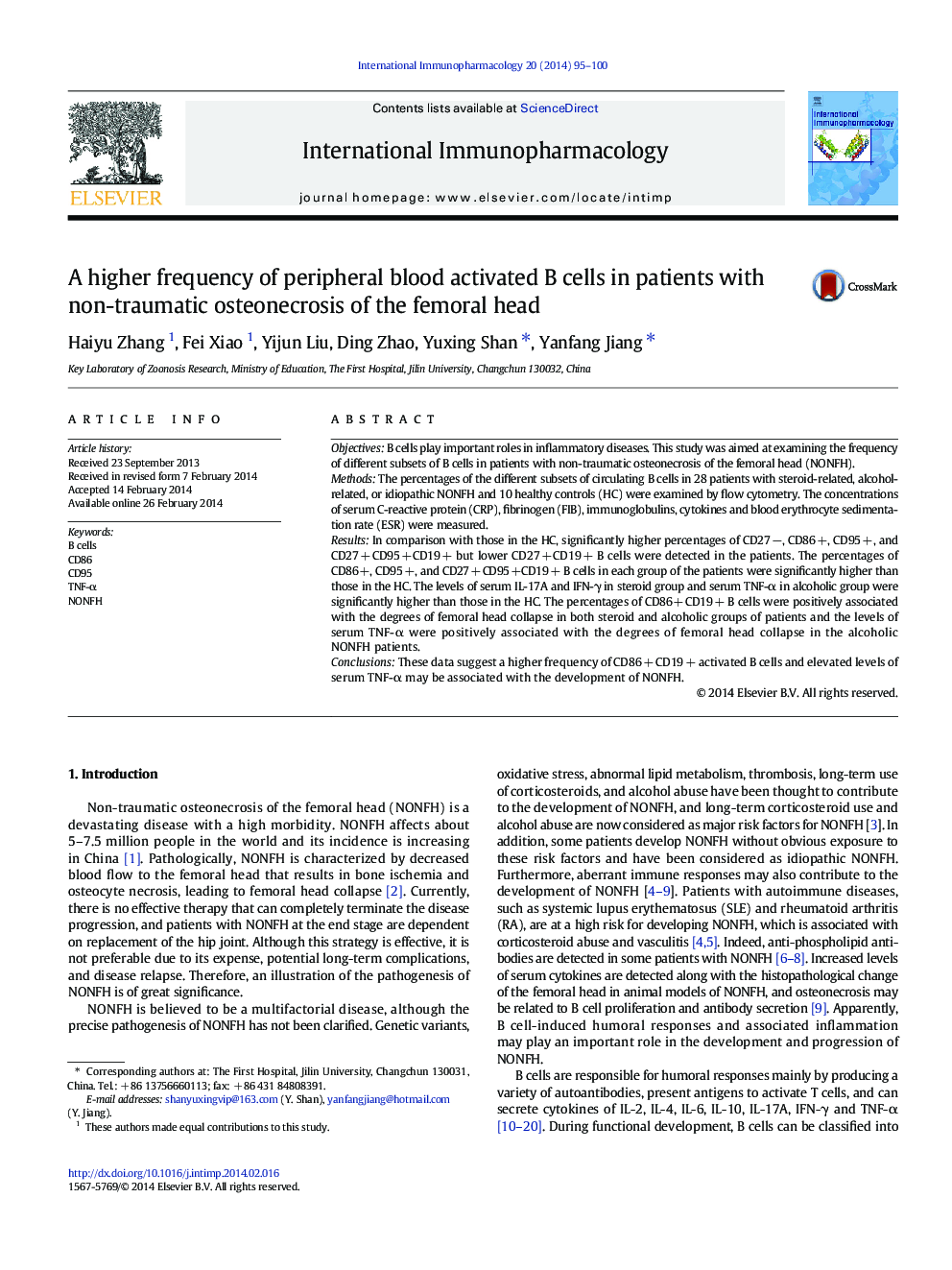| Article ID | Journal | Published Year | Pages | File Type |
|---|---|---|---|---|
| 5832813 | International Immunopharmacology | 2014 | 6 Pages |
â¢An imbalance of the different subsets of B cells in NONFH patientsâ¢A higher frequency of CD86 + B cells may be associated with the development of NONFH.â¢Higher serum TNF-α may be crucial for the development of alcohol-related NONFH.â¢Targeting TNF-α and CD86 + B cells may be valuable for inhibiting the process of NONFH.
ObjectivesB cells play important roles in inflammatory diseases. This study was aimed at examining the frequency of different subsets of B cells in patients with non-traumatic osteonecrosis of the femoral head (NONFH).MethodsThe percentages of the different subsets of circulating B cells in 28 patients with steroid-related, alcohol-related, or idiopathic NONFH and 10 healthy controls (HC) were examined by flow cytometry. The concentrations of serum C-reactive protein (CRP), fibrinogen (FIB), immunoglobulins, cytokines and blood erythrocyte sedimentation rate (ESR) were measured.ResultsIn comparison with those in the HC, significantly higher percentages of CD27 â, CD86 +, CD95 +, and CD27 + CD95 +CD19 + but lower CD27 + CD19 + B cells were detected in the patients. The percentages of CD86 +, CD95 +, and CD27 + CD95 +CD19 + B cells in each group of the patients were significantly higher than those in the HC. The levels of serum IL-17A and IFN-γ in steroid group and serum TNF-α in alcoholic group were significantly higher than those in the HC. The percentages of CD86 + CD19 + B cells were positively associated with the degrees of femoral head collapse in both steroid and alcoholic groups of patients and the levels of serum TNF-α were positively associated with the degrees of femoral head collapse in the alcoholic NONFH patients.ConclusionsThese data suggest a higher frequency of CD86 + CD19 + activated B cells and elevated levels of serum TNF-α may be associated with the development of NONFH.
